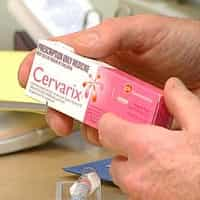It is good to remember that infertility is not the inability to have children, but the inability to conceive. The causes of a high number of spontaneous abortions and female infertility are to be found, in most cases, in congenital malformations. By congenital malformations we mean those malformations, visible or not, already present from birth as a result of an incorrect or anomalous formation process that occurred during gestation. The most frequent malformations, so to speak since they affect only 0.1% of women, are those that affect the uterus and vagina. Uterus and vagina, in the embryonic stage, are double, it may seem strange, but this depends on two structures, the horns of Muller. These "doubles" which are initially at the height of the kidneys, slowly descend towards the vulva until they get closer. Initially separated by a membrane, they tend to merge slowly until the membrane is completely reabsorbed, once this reabsorption is completed, a uterine cavity, a vagina, two tubes and two ovaries are formed. The crucial point is precisely this, if something goes wrong during the resorption phase, the malformations mentioned above are generated. The uterus has defects, based on the extent of these defects it is possible to identify different types of anomalies:
- Bicornuate uterus : the fusion of the two Muller bodies is not complete, a vagina and neck of the uterus have formed, but a double uterine cavity separated by an internal membrane. Conception is possible, however premature births or miscarriages caused by lower uterine elasticity are frequent.
- Unicorn uterus : the presence of only one horn leads to failed fusion, spontaneous abortions are very frequent, and can also be found in advanced pregnancy. Then there are cases in which the horn is not connected to a tube and a functioning ovary, the chances of conception are very low or null.
- Septum uterus : once the fusion has taken place, a fibrous membrane, called the septum, remains inside the uterus, where the embryo often tends to nestle. The abnormality can be removed with hysteroscopy surgery.
Most common is endometriosis, an overabundance of uterine tissue, the endometrium, which tends to grow outside its normal site. The secreted hormones often cause difficulties in conception, if this happens, the embryo may not be able to implant itself in an unwelcoming environment. Also called into question are fibroids, nodules of fibrous or muscular tissue that are located in different points of the reproductive system, preventing its correct functioning. The diagnosis of these dysfunctions takes place through appropriate tests, in addition to an internal gynecological visit it is good to do a transvaginal ultrasound, with an ultrasound probe that allows you to study, at the structural level, the reproductive system. Another way is that of Sonohysterography, through a contrast medium injected into the vagina, it is possible to observe the uterine cavity, which, when reached by the fluid, allows to analyze the endometrium and any residues of Muller's horns. In principle, the consequences of what has been said so far can be circumvented by resorting to surgical interventions of various kinds, to be performed in Day-Hospital, in total confidentiality and without trauma for the woman.
You may also like
Infertility: from Rome the invitation to find out why
Couple fertility check-up: this is the proposal of an assisted reproduction center in Rome. From 1st to 12th March, on the occasion of Women's Day, it will be possible to carry out a couple's fertility check in just one hour and at a reduced cost compared to the normal rates. The tests will include a… Continua a leggere Infertility: from Rome the invitation to find out why
